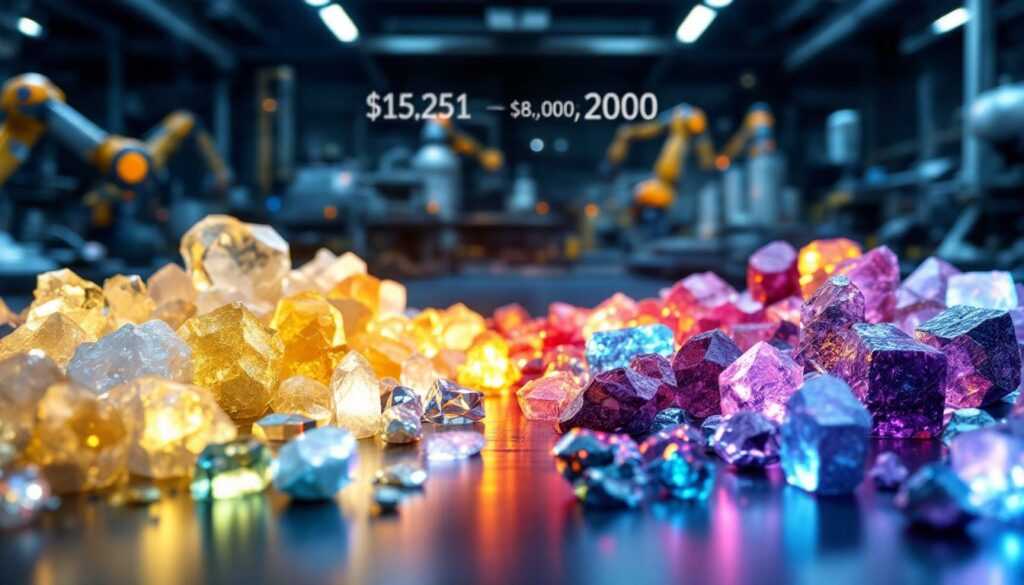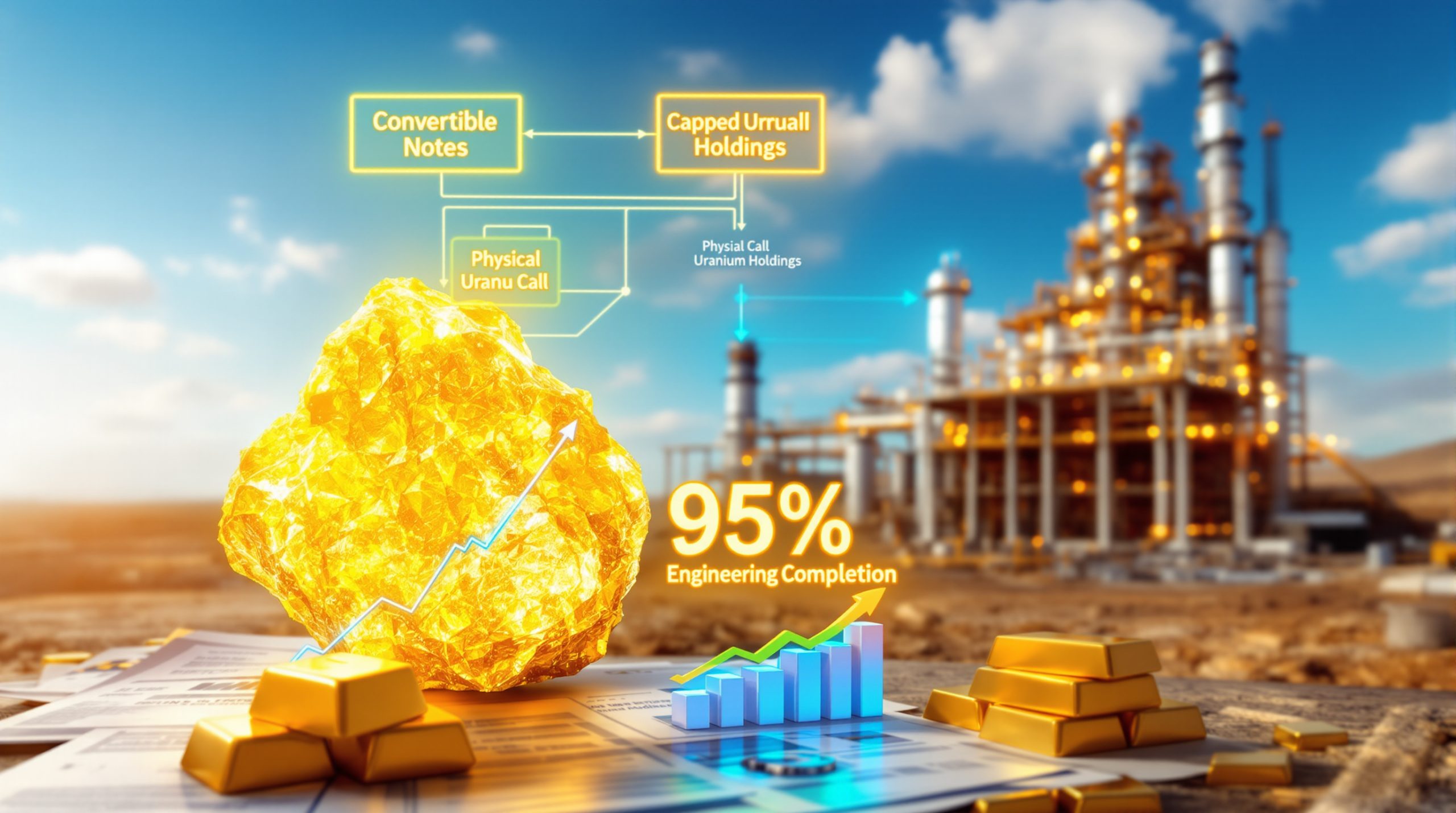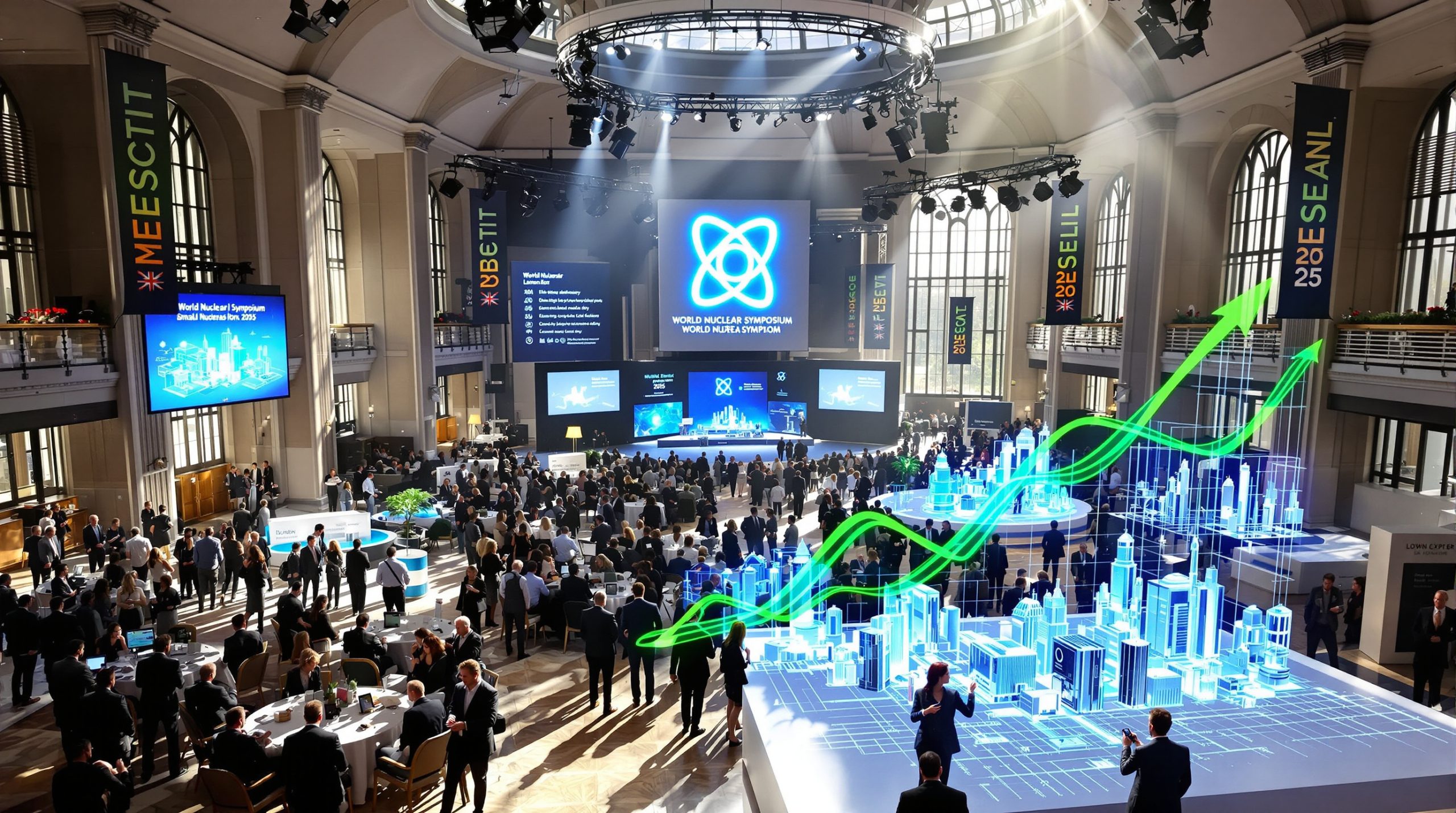What's Driving the Current Rare Earth Market Polarization?
The rare earth market in 2025 is experiencing a remarkable divergence in pricing dynamics, creating a distinct two-tiered market that presents both challenges and opportunities for industry stakeholders. The polarization is characterized by relatively stable light rare earth prices contrasted with significant upward momentum in medium-heavy rare earth prices.
According to the latest data from Shanghai Metal Market (SMM), medium-heavy rare earth elements have seen substantial price increases throughout the second quarter of 2025. This comes after what analysts describe as a "previously sluggish market" that has now transformed into a decidedly bullish environment.
"The rare earth market prices are showing a polarized trend," notes SMM in their July 2025 market review. "Light rare earth prices remain stable, while medium-heavy rare earth prices have risen significantly, driven by procurement by major manufacturers and medium-heavy rare earth prices."
This market bifurcation reflects the complex interplay between industrial demand, strategic procurement, and the fundamental geological scarcity of different rare earth elements. Medium-heavy rare earths like dysprosium, terbium, and holmium are not only less abundant in natural deposits but also face more complex extraction and processing requirements.
Current Market Price Snapshot (July 2025)
| Rare Earth Product | Current Price (Yuan/mt) | Recent Trend |
|---|---|---|
| Pr-Nd oxide | 444,000-446,000 | Increasing |
| Dysprosium oxide | 1.62-1.63 million | Increasing |
| Terbium oxide | 7.08-7.12 million | Increasing |
| Gadolinium oxide | 162,000-163,000 | Stable |
| Holmium oxide | 520,000-525,000 | Increasing |
| Erbium oxide | 304,000-308,000 | Fluctuating |
| Pr-Nd alloy | 543,000-548,000 | Stable |
| Dysprosium-iron alloy | 1.56-1.58 million | Stable |
| Terbium metal | 8.7-8.8 million | Stable |
| Gadolinium-iron alloy | 156,000-157,000 | Stable |
| Holmium-iron alloy | 520,000-525,000 | Increasing |
| Lanthanum-cerium alloy | 17,000-19,000 | Stable |
The price differential between light and medium-heavy rare earths has reached historic levels, with terbium oxide commanding over 7 million yuan per metric ton—nearly 400 times the price of lanthanum-cerium alloy. This extreme price disparity underscores the strategic importance of medium-heavy rare earths in advanced technology applications.
Market Insight: The widening price gap between light and medium-heavy rare earths reflects not just current demand dynamics but also growing concerns about future supply security for these critical elements. As one industry analyst noted, "The market is pricing in both current demand and anticipated scarcity."
How Are Major Manufacturers Influencing the Rare Earth Market?
The significant price increases in medium-heavy rare earths can be directly attributed to strategic procurement activities by major manufacturers. This represents a fundamental shift in market dynamics that has effectively reversed a prolonged period of price stagnation.
"Influenced by procurement from leading manufacturers, market sentiment has turned bullish," reports SMM. "Previously in the doldrums, the medium-heavy rare earth market has seen suppliers raise quotes to test market reactions."
This procurement-driven rally demonstrates the outsized influence that major industrial consumers can exert on rare earth markets, which are relatively small and thinly traded compared to base metals or precious metals markets.
The Procurement-Driven Price Rally
Major manufacturers have initiated substantial purchasing programs for medium-heavy rare earths, creating several market effects:
- Sentiment transformation: The market has shifted from bearish to bullish virtually overnight
- Price discovery: Suppliers are testing progressively higher price points to gauge buyer resistance
- Supply chain activation: Previously hesitant producers are now more willing to bring material to market
- Price floor establishment: A new minimum price threshold has emerged for key elements like dysprosium and terbium
This procurement activity appears strategic rather than merely operational, suggesting manufacturers may be building inventory positions ahead of anticipated supply constraints or increased production requirements.
Strategic Testing of Market Thresholds
In response to the increased buying activity, suppliers have begun systematically raising their quotations to test the limits of the market's price elasticity. This behavior indicates growing confidence in sustained demand fundamentals.
The price testing is most evident in dysprosium and terbium markets, where successive price increases have been met with continued buying interest rather than demand destruction. This suggests manufacturers have limited price sensitivity for these critical minerals energy—a dynamic that could support further price appreciation.
Industry Perspective: "When major manufacturers enter procurement mode for medium-heavy rare earths, they're typically looking beyond short-term price considerations," explains a rare earth market specialist. "These elements are often irreplaceable in high-performance applications, making security of supply the paramount concern."
Why Are Light and Medium-Heavy Rare Earths Following Different Trajectories?
The divergent price trends between light and medium-heavy rare earths stem from fundamental differences in their supply-demand dynamics, geological abundance, and industrial applications.
Light Rare Earth Price Stability Factors
Despite the bullish trend in medium-heavy rare earths, light rare earth prices have maintained relative stability due to several counterbalancing factors:
- Raw material cost support: Production costs create a natural price floor, preventing significant downward movement
- Demand weakness: "Weak demand from magnetic material enterprises" (SMM) is limiting upward price pressure
- Supply adequacy: Light rare earths are more abundant in most rare earth deposits worldwide
- Processing capacity: More established processing routes exist for light rare earths
The abundance of light rare earths like lanthanum and cerium in most rare earth deposits means they're often produced in excess of market requirements as a consequence of mining industry evolution targeting the more valuable elements. This creates structural oversupply that dampens price volatility.
Medium-Heavy Rare Earth Price Growth Catalysts
The substantial price increases for medium-heavy rare earths can be attributed to a combination of demand and supply factors:
- Targeted procurement: Major manufacturers have specifically focused on securing medium-heavy rare earths
- Geological scarcity: Medium-heavy rare earths are naturally less abundant in most deposits
- Processing complexity: Separation of medium-heavy rare earths requires more sophisticated techniques
- Strategic applications: These elements are critical in high-tech and defense applications with few substitutes
The concentration ratio of medium-heavy rare earths in most deposits is significantly lower than light rare earths, typically constituting less than 10% of total rare earth content in most commercially viable resources. This creates a natural production bottleneck that becomes apparent during demand surges.
Technical Insight: "The separation factors between adjacent medium-heavy rare earth elements are much smaller than those between light rare earths," notes a process metallurgist. "This makes their isolation substantially more difficult and costly, requiring more extraction stages and higher chemical consumption."
What Are the Industrial Applications Driving Demand?
Understanding the end-use applications for different rare earth elements provides crucial context for the current market dynamics and explains the divergent price trajectories.
Critical Applications for Medium-Heavy Rare Earths
Medium-heavy rare earths experiencing price increases are essential components in several high-value applications:
- Advanced permanent magnets: Dysprosium and terbium are crucial for enhancing high-temperature performance in NdFeB magnets used in electric vehicles and wind turbines
- Precision optics: Gadolinium, holmium, and erbium are used in specialized glass for fiber optics and lasers
- Defense systems: Terbium and dysprosium enable miniaturized motors and actuators in missile guidance systems and smart munitions
- Medical imaging: Gadolinium compounds serve as contrast agents in magnetic resonance imaging (MRI)
- Solid-state lighting: Terbium provides green phosphors for energy-efficient lighting and displays
The concentration of medium-heavy rare earths in high-growth, high-technology sectors explains why manufacturers are willing to pay premium prices to secure supply. For many of these applications, there are no commercially viable substitutes that can match the performance characteristics of these elements.
Light Rare Earth Industrial Usage
Light rare earths maintaining stable pricing serve more established industrial applications:
- Standard NdFeB magnets: Neodymium and praseodymium form the basis of permanent magnets for consumer electronics and industrial motors
- Catalytic converters: Lanthanum and cerium catalysts reduce automotive emissions
- Petroleum refining: Lanthanum-based catalysts enable fluid catalytic cracking in oil refineries
- Glass additives: Cerium oxide is used in glass polishing and UV-blocking applications
- Metallurgical applications: Mischmetal (primarily cerium and lanthanum) improves metal properties in steel and alloys
These applications, while substantial in volume, are more mature markets with established supply chains and alternatives. The magnetic materials sector, a major consumer of light rare earths, is currently experiencing weaker demand according to SMM, contributing to price stability.
Application Insight: "The EV transition is transforming rare earth demand patterns," observes an automotive industry analyst. "While neodymium and praseodymium remain important, it's the heat-resistant properties of dysprosium and terbium that enable high-performance permanent magnet motors to operate efficiently at the elevated temperatures experienced in electric powertrains."
What Are the Short-Term Market Outlook and Expectations?
Based on current market conditions and established procurement patterns, several projections can be made about the near-term trajectory of rare earth prices.
Projected Market Stability Factors
The rare earth market is expected to maintain relative strength in the short term, with medium-heavy elements likely continuing their upward momentum while light rare earths remain stable.
"It is expected that in the short term, the rare earth market will hold up well under the influence of procurement by major manufacturers and medium-heavy rare earth prices," states SMM in their market outlook.
Several factors support this projected stability:
- Sustained procurement: Major manufacturers appear to be executing medium to long-term purchasing strategies
- Strategic stockpiling: End-users are building inventory positions against future supply uncertainty
- Limited new production: Few new sources of medium-heavy rare earths are coming online in the immediate future
- Technological demand growth: Ongoing development of green technologies continues to require rare earth inputs
The procurement activities by major manufacturers appear to be part of a longer-term strategy rather than short-term operational requirements, suggesting sustained buying interest through at least the third quarter of 2025.
Potential Market Risks and Challenges
Despite the positive short-term outlook, several factors could potentially disrupt market stability:
- Manufacturing slowdown: Any reduction in industrial output could curtail procurement volumes
- Seasonal factors: Traditional Q3 slowdowns in manufacturing could temporarily reduce demand
- Geopolitical tensions: Trade restrictions or export controls could disrupt established supply channels
- Substitution efforts: Ongoing research into rare earth alternatives could eventually reduce demand pressure
The market also faces the risk of overreaction as suppliers potentially misinterpret the current procurement activity as signaling stronger-than-actual end-user demand, which could lead to price corrections if buying interest subsides.
Strategic Perspective: "Manufacturers are likely pursuing a two-track strategy," suggests a supply chain consultant. "Immediate procurement to secure operational needs, coupled with longer-term initiatives to reduce dependency through material efficiency, recycling, and substitution research."
How Does the Global Supply Chain Impact Rare Earth Pricing?
The rare earth market is heavily influenced by global supply chain dynamics, with production highly concentrated in specific regions and processing capabilities even more narrowly distributed.
Geographic Production Distribution
The global rare earth supply chain exhibits several distinctive characteristics that directly influence pricing:
- Mining concentration: China accounts for approximately 60% of global rare earth mining production
- Processing dominance: Chinese facilities process over 85% of the world's rare earth elements
- Emerging alternatives: Australia, the United States, and Myanmar are expanding their roles in the supply chain
- Processing bottlenecks: Separation and refining capacity outside China remains limited, creating vulnerabilities
This geographic concentration creates inherent supply risks that are priced into medium-heavy rare earth elements. With fewer alternative sources available, supply disruptions can have outsized price impacts.
The concentration is particularly acute for medium-heavy rare earths, with ion-adsorption clay deposits in southern China providing the majority of global dysprosium, terbium, and other heavy rare earths. These deposits, while relatively low-grade, are currently the world's primary economical source of medium-heavy rare earths.
Supply Chain Resilience Initiatives
In response to recognized supply chain vulnerabilities, several initiatives are underway globally:
- Diversification projects: New mining operations are being developed in Australia, Canada, the United States, and Africa
- Processing investments: Rare earth separation facilities are being constructed outside China in the US, Europe, and Australia
- Recycling development: Technologies to recover rare earths from end-of-life products are advancing toward commercial scale
- Strategic reserves: Several countries are establishing stockpiles of defence critical materials
These initiatives aim to create more resilient supply chains, but most remain years away from significantly impacting market dynamics. The technical complexity of rare earth separation and the environmental challenges associated with processing continue to pose barriers to rapid supply chain diversification.
Regulatory Insight: "The rare earth supply chain has become increasingly entangled in geopolitical considerations," notes a policy analyst from Source.Benchmark Minerals. "Countries are now viewing these materials through a national security lens rather than purely economic terms, driving government intervention in what was previously a market-driven sector."
What Investment Opportunities Exist in the Rare Earth Sector?
The current market dynamics create various investment considerations across the rare earth value chain, from mining and processing to advanced materials and recycling technologies.
Upstream Investment Considerations
For those considering investments in rare earth mining and processing:
- Project selection: Deposits with higher proportions of medium-heavy rare earths may offer superior economics
- Processing capability: Ventures with integrated processing solutions address a key industry bottleneck
- Geographic positioning: Projects in politically stable jurisdictions may command premium valuations
- Environmental credentials: Operations demonstrating sustainable practices may gain preferential market access
The economics of rare earth projects are increasingly favorable with rising medium-heavy rare earth prices, potentially unlocking resources previously considered sub-economic. Projects with significant dysprosium, terbium, and holmium content are particularly well-positioned in the current market environment.
Downstream Strategic Positioning
For manufacturers and end-users of rare earth products:
- Supply security: Long-term offtake agreements with miners provide price and availability assurance
- Vertical integration: Controlling parts of the supply chain reduces vulnerability to market fluctuations
- Recycling investment: Developing in-house recycling capabilities creates a secondary supply source
- Material efficiency: Research into reducing rare earth content can provide competitive advantages
The strategic value of these investments often extends beyond direct financial returns, providing supply chain resilience that may justify premium costs in an increasingly uncertain global trade environment.
Investment Perspective: "The rare earth sector represents a fascinating investment case," comments an industrial metals analyst from AgMetal Miner. "It combines elements of commodity investing, technology exposure, and geopolitical positioning. The challenge is finding pure-play opportunities with sufficient liquidity and transparent operations."
FAQ: Understanding Rare Earth Market Dynamics
What is causing the price difference between light and medium-heavy rare earths?
The price divergence stems from fundamentally different supply-demand dynamics. Medium-heavy rare earths are experiencing targeted procurement by major manufacturers while facing more constrained supply due to their lower natural abundance. Light rare earths have weaker demand from magnetic material enterprises and more balanced supply fundamentals. As SMM notes, "Light rare earth prices remained stable due to raw material cost support and weak demand," while medium-heavy prices have increased significantly due to strategic procurement activities.
How long is the current price trend expected to continue?
While short-term projections from SMM suggest continued strength in the rare earth market, particularly for medium-heavy elements, the sustainability of current trends depends on several factors. Continued procurement by major manufacturers will likely support prices through Q3 2025, but any slowdown in manufacturing activity, successful substitution efforts, or new supply coming online could moderate price growth. Market participants should monitor manufacturer inventory levels and procurement patterns for early signals of trend changes.
Which rare earth elements are classified as medium-heavy rare earths?
Medium-heavy rare earths include elements with higher atomic numbers in the lanthanide series, specifically: gadolinium (Gd), terbium (Tb), dysprosium (Dy), holmium (Ho), erbium (Er), thulium (Tm), ytterbium (Yb), lutetium (Lu), and yttrium (Y). These elements typically exhibit different chemical properties and are less abundant than light rare earths, which include: lanthanum (La), cerium (Ce), praseodymium (Pr),
Want to Stay Ahead of the Next Major Mining Discovery?
Discover potential market-moving mineral finds before they make headlines with Discovery Alert's proprietary Discovery IQ model, delivering real-time ASX announcements straight to your inbox. Explore historic returns from significant discoveries and start your 30-day free trial at Discovery Alert's discoveries page.




